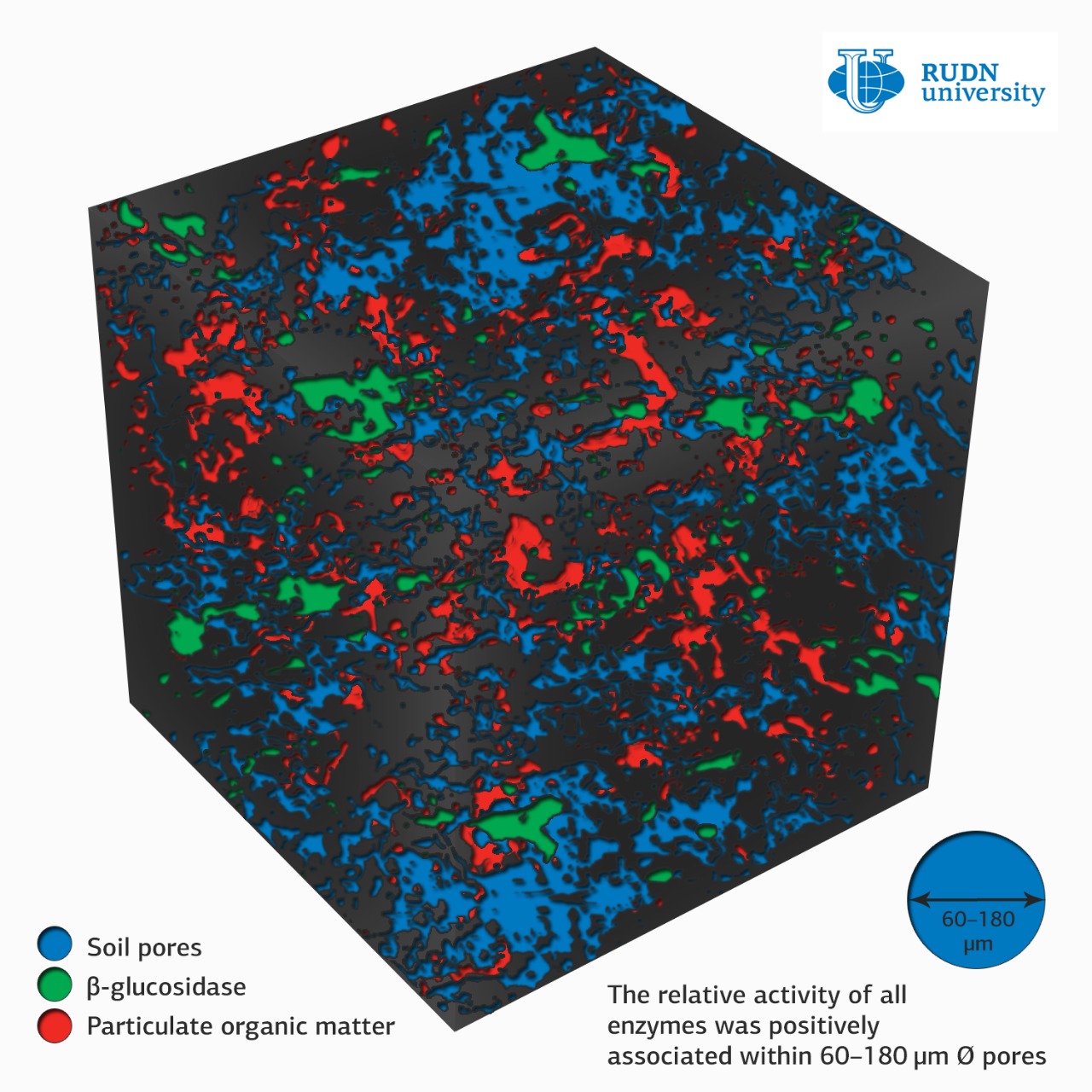Soil scientists from RUDN University have determined the optimal size of soil pores for the activity of microorganisms
Soil types differ from each other not only in chemical properties but also in the location, form and size of the pores. Although there are both small and large pores in any soil, but their ratio can be different. Larger pores (from 100 microns) filled with air and they are located between soil aggregates, fine pores (10-100 micrometers) filled with water inside aggregates. There are colonies of microorganisms in the pores that are responsible for biochemical reactions associated with the cycles of carbon, phosphorus, nitrogen and other chemical elements. microorganisms stimulate fertility, and understanding parameters (including pore sizes) the "well-being" of microorganisms depends, will help farmers to increase crop productivity.
Previously, the distribution of enzymes secreted by soil microorganisms was associated only with the chemical and biological properties of the soil. However, the physical structure of the soil also affects beneficial microbial communities and therefore enzymes. Soil scientists from RUDN University first found the optimal parameters of the soil pores for microbial communities. They have considered pores with soil 2D zymography— biochemical method of studying the activity of enzymes, and X-ray computed tomography.
Soil samples from five land-use systems were taken from areas prepared for experiments by The W.K. Kellogg Biological Station in Michigan (USA): soil on which only corn was grown (1); the same soil, but with winter cover of rye (2); the soil on which millet was cultivated (3); the hybrid poplar with grassy understore (4) and the soil on which biological communities were successively replaced as a result of some natural factors or human activity (5). There were no living roots in the samples, that is, the activity of microorganisms was the main driving force behind the production of enzymes.
To determine the distribution and pore size in soils, samples of 5-10 centimeters long were scanned with X-rays. Mapping of enzyme activity was performed using zymography. Special membranes with substrates were placed on the surface of the samples, which released fluorescent products upon reaction. In the ultraviolet light the activity of six enzymes involved in the cycling of carbon, nitrogen, and phosphorus in
the soil: cellobiohydrolase, xylanase, acid phosphatase, β-glucosidase, leucine aminopeptidase, and N-acetylglucosaminidase were analyzed. The combination of these two methods made it possible to create 3D maps that visualize the relationship between soil pore sizes and enzyme activity in an undisturbed soil matrix.
In all studied soil samples – regardless of the type – the highest enzyme activities (and hence the highest activity of microorganisms) were observed in pores with a diameter of 60-180 micrometers. Therefore, pores of this size are optimal as microbial habitats. Activity of all six enzymes in pores of smaller or larger size were smaller. Whole microbial colonies are located in pores of this size, there is optimal access of water and oxygen. More small roots grow in these pores and provide greater input of available carbon. Thus, the size of soil pores does affect the distribution of enzymes.
The experiment first confirmed that the combination of these two methods is effective for the study of three dimensional distribution of enzymes in soil. In the future, soil scientists plan to improve the resolution of images and take into account additional factors such as fresh carbon, moisture, and soil acidity. This will provide more accurate data and enhance understanding of biochemical processes in situ — in the place where they occur, without any disturbance.
The article in Soil Biology and Biochemistry
Sergey Ivanov, a scholar from St. Petersburg, has been named the first winner of RUDN University’s International Prize for Scientific Achievements in Mathematics, worth 5 million rubles.
Products derived from microalgae represent a cutting-edge development in the field of bioeconomy. The potential of this biological resource was discussed at the international research seminar “Foundations for a Green Sustainable Energy”, part of the BRICS Network University’s thematic group on “Energy”. The event was organized by the Institute of Ecology at RUDN University.
Ambassadors of Russian education and science met at a conference in RUDN University to discuss how they can increase the visibility of Russian universities and research organizations in the world, and attract more international students in Russia.
